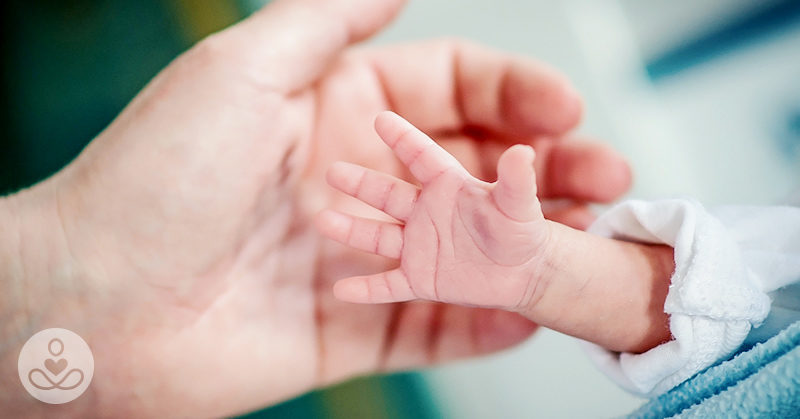Every year, according to the World Health Organization (WHO), there are about 15 million babies born early (or preterm) – and this number continues to rise. Linked to that are preterm birth complications, which are the leading cause of death for children 5-years-old and under.
But, what exactly does preterm mean?
Generally, says WHO, babies that are born alive before 37 weeks of pregnancy are completed are considered preterm. If you’re thinking that almost 40 weeks is too long a timespan to group preterm babies into, you’re not alone. That’s why three sub-groups exist: [1]
- Extremely preterm (less than 28 weeks)
- Very preterm (28-32 weeks)
- Moderate to late preterm (32-37 weeks)
Side by side, the differences between an extremely preterm baby and a moderate preterm one is quite noticeable. Premature babies are all similar in that they’re small and require more complex care, which is why the more internal and developmental differences are also significant to know in case you or someone you know gives birth to a preterm baby.
A Week-By-Week Look at Premature Babies

Below, we break down the preterm sub-groups even more to see the subtle yet significant differences each type of preterm baby presents week to week! [2]
23-24 Weeks
Also known as “micro preemies,” babies born during these weeks already have fully formed hearing systems! They’ll even have tiny little finger nails and fully developed eyebrows and eyelashes. However, their eyes will still be fused shut, lower airways will still be developing (and require respiratory support), and they won’t have any brown fat. But at 8 inches long, the body and nervous system are still underdeveloped so you don’t want to overstimulate them with loud noises. [2]
25-26 Weeks
Coming in at 9 inches and weighing just one-and-a-half pounds, these micro preemies’ lungs are still a bit too undeveloped to breathe independently. However, during these weeks, babies will have developed the “startle reflex,” which means they’ll react to loud noises! The prints on their tiny fingers and feet will also develop during this time. [2]
27-28 Weeks
In just two extra weeks, these preterm babies will have almost doubled in both weight and size! Along with those milestones, they can now blink, form images, develop sleep-wake cycles, and dream! Compared to earlier births, the survival rate of babies born during these weeks (and after their NICU discharge) is over 95 percent! [2]
29-30 Weeks
At three pounds and 17 inches, babies born during this period start looking more like “real” babies which is largely because they have more fat stored under their skin. They will also start to shed the fine hair that covers preterm babies’ bodies. Amazingly, the brain goes through a growth spurt of its own – so much so that it starts to control body temperature. Babies’ vital organs are almost ready to digest milk, so doctors suggest sucking on a pacifier to strengthen their eating muscles! [2]
31-32 Weeks
During these weeks, babies will gain more body fat and look plumper which helps them stay warm without the help of an incubator! However, babies born at this stage still require a lot of care and just because they are awake more and may seem ready for home, their chances to thrive and grow are highest in the NICU. [2]
33-34 Weeks
Moderately preterm babies are almost fully developed! Bones are fully formed, fingernails come to the ends of their fingertips, and testicles descend into the scrotum (in boys). But, there are still many things that need to happen. For example, the immune system-building antibodies start transferring from mother to baby. Even though the baby is fairly developed, they can still suffer from overstimulation. So, make sure to look out for signs of that, which may include hiccups, sneezes, coughs, or a cry. [2]
35-36 Weeks
Late preterm babies will be around 20 inches and weigh almost six pounds! Although still premature, they will have rapidly gained weight, have fully grown fingernails and fully formed footprints, as well as reached their full height. Because they’re still a couple of weeks shy of being born full-term, they will likely still have trouble staying warm, feeding effectively, and breathing independently. [2]
Continuing to care for preterm babies, ensuring they get all the sleep and food they can get, as well as whatever the NICU has to offer are some of the best things for their healthy growth and development! If you want proof, just read this nurse’s stunning story…
A Chance Encounter
Almost three decades ago, a California nurse named Vilma Wong had to care for a preterm baby… something she did a lot of in the NICU. Fast forward 28 years to August 2018 at Stanford University where second-year pediatric resident Brandon Seminatore joined Wong’s team to complete a child neurology residency.
“I asked who he was and his name, and last name sounded very familiar,” Wong said in a statement. [3] “I kept asking where he was from, and he told me that he was from San Jose, California, and that, as a matter of fact, he was a premature baby born at our hospital.”
Could she be the nurse who cared for him in the NICU? It’s not farfetched.
“I asked him if his dad was a police officer,” she said. “And there was a big silence, and then he asked me if I was Vilma, I said yes.”
Even Seminatore’s mom told him to ask about a nurse named Vilma when he went to do his residency. You can imagine their excitement and amazement upon hearing that their son was on the nurse’s team who helped him get where he is today! (They even sent that picture of Vilma holding him as a baby!)
“I needed an incubator to keep me warm, a ventilator to help me breath, and had near endless pokes and prods to make sure I was healthy and growing appropriately,” said Seminatore. “Meeting Vilma was a surreal experience. I never expected to meet a provider who took care of me when I was a baby.”
Such a powerful story! It just goes to show how valuable and tender care can be in the face of adversity. No matter how stacked the odds may seem against preterm babies, nurses like Vilma Wong are so crucial to their success in life, from day one or year twenty-eight!
[1] Preterm birth. (n.d.). Retrieved from https://www.who.int/news-room/fact-sheets/detail/preterm-birth
[2] Bird, C., & Forman, J. (n.d.). A Week-by-Week Look at Premature Babies. Retrieved from https://www.verywellfamily.com/premature-babies-week-by-week-2748606
[3] Phorn, B. (2018, September 04). Nurse discovers 28-year-old colleague was premature baby she cared for. Retrieved from https://abcnews.go.com/US/nurse-discovers-28-year-colleague-premature-baby-cared/story?id=57591059

